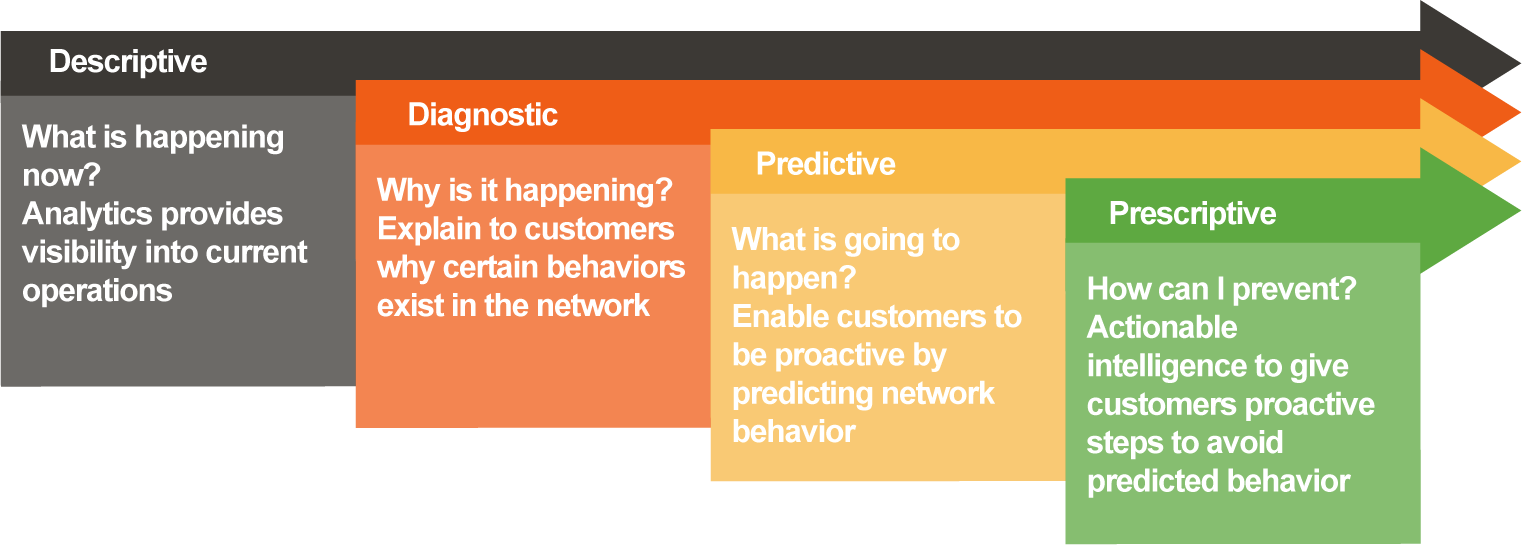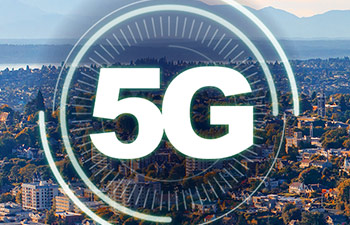Analytics
Descriptive, Diagnostic, Predictive and Prescriptive Analytics
Parallel Wireless offers a comprehensive set of tools across phases, starting with the descriptive phase of analytics. The first set of tools is meant to provide visibility into current operations of the network. Visibility is the first step to managing the network. Our tools provide key insights and metrics that provide actionable and timely insights. Beyond the visibility, our tools provide rationalizing the network operations and help customers to understand why network metrics exhibit current dynamics. Rationalizing is key to customers knowing how to manage the network thus providing heat maps, reduced downtime and root cause analysis.
Parallel Wireless provides customers beyond network visibility and helps predict network behavior and remedial actions to prevent unplanned downtime, prepare for network expansion and improve customer satisfaction by reducing dropped calls, increased network coverage and improved handover efficiency.
With 5G use cases, analytics provide operators data-driven management and optimization of 2G/3G/4G/WiFi workload orchestrations to support network slice management, bandwidth optimization to evolve into providing eMBB, URLLC and MMTC across the network with varying levels of SLAs and high availability.
Network Automation
Focused on lowering TCO for service provides, our tools provide automation to help ease the deployment, lifecycle management and maintenance of the network. This layer of automation provides a way to capture the customer-specific, customized policies and procedures that ensure minimal user intervention.
The Parallel Wireless Analytics Module will also provide northbound interfaces for customers to be able to orchestrate and provide input for other intelligent network-wide load balancing, distributing workloads within the mobile networks appropriated based on requirements for each of the network functions. Some network function, such as real-time interference management of the cells based on UE reports, may be deployed closer to the tower as a virtualized function compared to trend analytics for network expansion planning workloads, which are better deployed at the data center with enough storage and computation.
Our Analytics suite also provides necessary data for training and inferencing of machine learning models essential for anomaly detection and prediction algorithms. In the area of intelligent network troubleshooting and analytics, classification algorithms will enable operators with assistance by complementing decisions.
Operators can leverage the rich set of tools that the Analytics suite of products provides to meet unexpected demand and be able to orchestrate and provision to achieve closed loop optimization that is impossible to realize without the help of Analytics.
Customer Benefits
A rich set of tools provides a level of network automation that helps drive TCO down for operators, eliminating manual errors with faster turnaround times. The network-wide visibility and intelligence provides improved subscriber experience driven by SON and AI enabled by analytics. Quicker resolution of outages and network maintenance leads to better customer retention thereby ensuring customers continued revenue. Analytics also help with identifying new areas that are new sources of revenue for service providers. And all the tools are built for cloud scale with cloud resiliency that is ready to meet the demands of the future.
Deployment Options
This solution can be used in the network deployment within private or public or hybrid cloud-native environments and is built to achieve cloud scale. The Parallel Wireless solution thus supports scenarios and use cases applicable as the industry migrates to 5G. For example, this virtualized analytics solution could be used for smart radio management. In this example, information about road and traffic conditions and device health is gathered and reported to the data center. This in turn increases efficiency since the data center can monitor the status of the cells and dynamically add additional capacity before network congestion occurs. By monitoring traffic conditions, traffic can automatically be rerouted to the most efficient route.
As a result of this solution, global mobile operators will be able to manage their Big Data Analytics under the same Network Function Virtualization (NFV) orchestration umbrella and bring real-time visibility into their networks to improve operational efficiency and reduce cost while improving end-user experience and creating new revenue opportunities.



